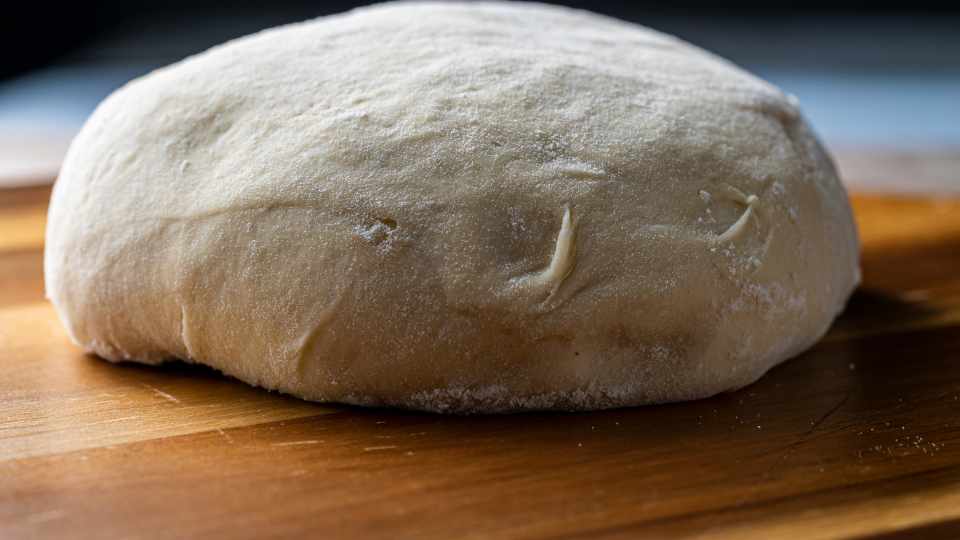Proofing Pizza Dough (A Quick Guide)
By Robert Parsons April 17th, 2023
Why does my pizza taste different from my favourite restaurant’s offering?
This is a very common question home cooks have when trying out a supposedly fool-proof pizza recipe. While there are several possibilities why this happens – after all, this Italian classic is composed of several layers. But according to expert chefs, the number one reason is not proofing the dough right.
What is Proofing?
Proofing is a crucial step in the pre-baking process that facilitates yeast activation in the dough. The term proofing is often used interchangeably with fermentation. Although that isn’t completely wrong because the cellular chemistry happening is the same, experts define proofing as the final rise that occurs once the dough is shaped before it is slid into the oven for baking.
This last step usually takes two hours. And that’s on top of the other steps in the procedure. To understand why it takes this long here’s the breakdown of the reaction within the dough. Hopefully, that would give you a good enough reason to wait.
The Science Behind Proofing

To comprehend proofing, let’s start with the most basic concept: fermentation.
Considered one of the oldest ways to process food dating back to 6000 BC, this is primarily used to preserve fresh produce in different parts of the globe. By a stroke of luck, some genius in Egypt mixed wheat flour and water, left it under the sun for too long and realized its wonderful effects.
This is essentially what happens during fermentation in baking: the bacteria and fungi present in the yeast eat the sugar in the flour and break it down into its most basic form. Since the microbes are feeding, it continues to grow and produce carbon dioxide. This gas continues to build up creating pockets of air bubbles within, causing the dough to rise.
As aforementioned, there are numerous times that fermentation happens in bread-making:
Also known as the starter, this is basically what ancient Egyptians discovered. The combination of equal parts flour and water is allowed to sit at room temperature for a particular time, allowing the existing microorganisms to do their job, and creating what is essentially yeast.
- – Bulk Fermentation
This second fermentation is also called the first rise. This can last for two hours on pizza dough and as much as eight hours on sourdough. Here, the starter is mixed with the rest of the ingredients (flour, water, salt, and sugar) and kneaded. Two main things happen during this step:
First, the microbes continue to work their magic, creating more air bubbles. Second, the gluten (protein) matrix is developed, giving the dough structure so the air bubbles won’t pop out.
- – The Second Rise
While not all recipes call for this, the pizza dough surely does. This step requires a punch down (deflation) after the first rise, so the microbes can move to areas in the dough they haven’t reached. After another two hours or so, the dough you get is larger and more springy.
- – Proofing
Whether you went through the second rise or settled for bulk fermentation only, you should final-proof your dough. This tests many people’s patience because this can last for another couple of hours up to one whole day, depending on the recipe.
Proofing happens after dividing the dough and placing the sections in individual containers to hold their shape. Here, the microbes continue to release gas while the gluten matrix continues to get stronger. This is also the part where the flavours are allowed to develop as the yeast matures.
Factors to Consider
Some people think proofing your dough simply means leaving it in a container covered with a soft cheesecloth and waiting for it to rise. In reality, this is quite harrowing because you need to ensure that the environment is suitable for this step in the baking process.
- – Time
Patience is very much required when making dough, particularly in this last step. Classic French croissant takes about two hours. Pizza, according to experts, requires at least 24 hours.
Underproofing is a common mistake because most people can’t wait to add the scrumptious topping and slide it into the oven. But preventing the rise will give you a flat, boring bread that isn’t fun to chew on.
You also have to be careful not to overproof. In pizza’s case, never go over 48 hours. The dough structure and ensuing crust texture are salvageable, although the possibility of getting a heavy, bready crust is increased. The worst thing that could happen is flavour alteration. Too much fermentation creates alcohol, after all, and you don’t want that extra acidic taste.
- – Temperature
Proofing should be done at room temp (35-37 degrees Celsius or 95-100 degrees Fahrenheit). If it gets colder, the yeast activity slows down. If it gets hotter, the yeast is deactivated and won’t rise anymore.
Then again, it’s best to check your recipe. In the case of the 24 to 48-hour pizza dough proofing, many agree that it should be done inside the fridge.
- – Humidity
If the air is too dry, a film of skin will form over the dough preventing it from rising. Ideally, there should be 75% relative humidity in the atmosphere.
You can do this by proofing your batch in the oven with boiling water. If this is your first time hearing this, then you know this tends to be disregarded by many home cooks. If you’re willing to wait two hours, you might as well do this.
- – Airflow
There shouldn’t be continuous air flowing in the room where you’re proofing as it could dry out the dough which would cause the ‘skin’ described above. Most recipes don’t specify that. But now you know.
It’s Worth the Wait
If you add up the number of hours spent on making preferment from scratch, letting the dough rise twice (bulk fermentation and second rise), and enduring the final proof, the whole process takes two days, even more.
But nobody said preparing pizza dough – the really good one, at least – was easy. It requires precision, persistence, and a whole lot of patience. The likelihood of a first-time failure is high, sure. But with the knowledge you now about proofing pizza dough, you might do well! You wouldn’t know unless you gave it a try.






